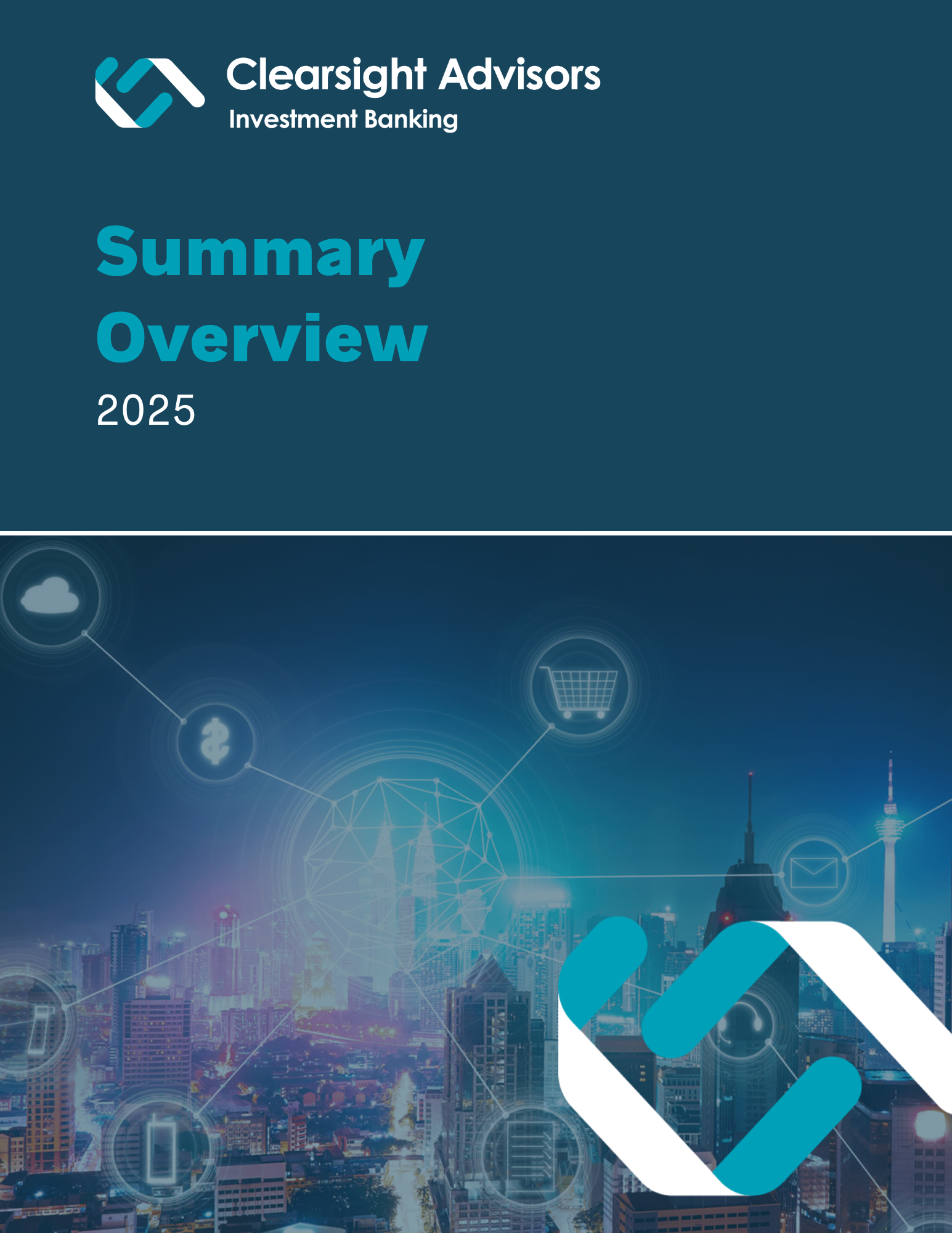Navigating the AI Revolution – Insights from Clearsight’s 2025 Summit
At Clearsight Advisors’ Knowledge Economy Summit last month, there was a palpable sense that business transformation is no longer on the horizon – it’s here. The event gathered over 200 C-Suite business leaders, private equity executives, and senior strategic decision-makers in Dallas, TX to network and share industry insights.
In addition to facilitating hundreds of private, one-on-one meetings, we hosted a panel of AI leaders who discussed the impact of this technology on the Knowledge Economy. Barr Blanton, CEO of Crosslake, moderated the panel consisting of: Naveena Allampalli, Global Senior Director of AI at CBRE; Tom Edwards, Americas Consumer AI Lead at EY; Ashu Goel, CEO of WinWire; Jim Rowan, Principal and Head of AI at Deloitte; and Anil Soletti, Head of Consumer Data for Citi. Key takeaways from the discussion, including considerations of current and future challenges for AI at the enterprise level, and how to best balance innovation with responsible governance, are summarized below.
Laying the Foundation: Data, Use Cases, and ROI
The dream of building AI or implementing third-party AI is often quickly met with the realities of business. According to our panelists, successful organizations don’t rush into AI. They take a step back, assess their approach, and then move swiftly with a clear plan.
Before drafting a proof of concept (POC), business leaders would be wise to shore up the foundations of AI, namely by having data available, organized, and accessible. Creating documentation with use cases from the business and user perspectives is important to justify why the firm is pursuing AI. Additionally, having a strong focus and ROI estimate, surmised from the productivity and efficiency gains from AI, provides clarity for a mission requiring incredible amounts of collaboration across business units. With the use cases proven, stakeholders are more likely to buy-in and reallocate portions of existing budgets to this experimentation. Even with a strong foundation, only about 30% of AI POCs make it to production. This is where many companies flounder.
From POC to Production: Where Companies Get Stuck
A common challenge for successful POCs is the often-siloed business units working on AI – from legal and cybersecurity to risk assessment and IT. The question of “Can we build it?” gets answered in creating the POC, but governance and compliance challenges quickly morph that question into “Should we build it, and how do we do so responsibly?” Building responsible AI requires organizations to mitigate risk and move at the speed of business. This starts with AI governance – the framework for transparent, ethical, compliant, and responsible AI.
Two critical factors in AI governance are its applicability and its ability to explain its outputs and decision-making. AI control gates, guardrails to regulate and manage the behavior of AI, help with security by providing visibility via input filtering and output verification for large language models (LLMs). Furthermore, evaluating the alignment of the model’s files and terms of service with privacy laws seems elementary, but is nevertheless a key pillar of AI governance.
AI Agent Takeover – Not Yet
These governance frameworks become even more critical when evaluating AI’s most hyped capability: AI agents. Our panelists agreed that AI agents, or AI software with the “agency” to act autonomously and independently toward a goal, are more hype than what the collective stressed is a rather distant reality. Today’s AI reality is at the same education stage it was 16 months ago – and having a human in the loop remains essential. Employees can understand complexity that LLMs have yet to add to their repertoire, as LLMs are based on correlations and predications. People are essential for orchestrating AI agents for implementation and maintaining reliability when connecting multiple tasks together. While AI agents have value, they are not currently a replacement for humans, but rather serve to augment human intelligence.
Balancing AI Efficiency with Human Expertise
This assessment of AI capabilities leads to how professional services firms – people-based businesses, often with an apprenticeship model — could restructure their talent models. In the eyes of our panelists, AI is not yet a cost-cutting tool. Instead, AI is an accelerator. The efficiency gains and increased pace of innovation afforded by AI create an expanding volume of work at the organizational level, particularly as client expectations surge. AI’s ability to automate repetitive tasks, where current efficiency gains of 30-40% stand to increase in the future, provides more opportunities for specialization and domain expertise. The value of professional services businesses remains with people, not data, despite the increased value and utility of data. As humans lead AI’s advancement and strengthen its capabilities, the differentiators of a business will reside in its ability to combine human skills, like empathy and curiosity, with real expertise.
In a world racing toward intelligent automation, businesses that invest in both their technology and their talent will be the ones to define the future – not just adapt to it. A competitive advantage or implementation debt will affect M&A valuations and integration strategies for years to come. Striking the precarious balance of AI capabilities with distinctly human skills and domain expertise will position forward-thinking enterprises to thrive in an AI-augmented future.
To learn more about Clearsight’s annual summit or experience advising Knowledge Economy businesses, please contact us at marketing@clearsightadvisors.com.
Share
